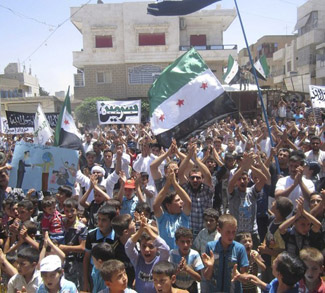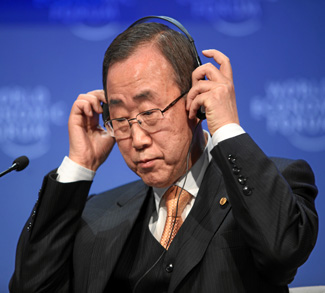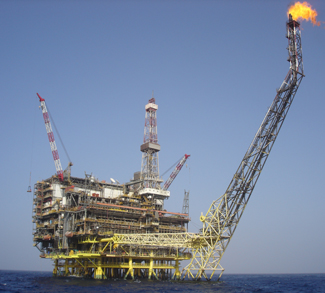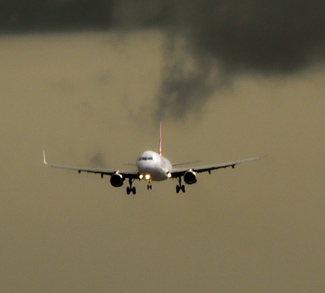The Assad regime’s persistent use of deadly force to crush a 16-month uprising by Syrian rebels is now expected to continue without foreign intervention, leaving many observers wondering why the same NATO coalition that was willing to enforce a UN-approved no-fly zone in Libya is unwilling to follow the same course of action in Syria. The answer is simple: Syria is not Libya, and this differentiation is made all the more clear by the geopolitical interests, great power relations, and the harsh realities of realpolitik that are involved.
Just a few years ago, the idea of a Syrian uprising against half a century of Ba’athist rule seemed unthinkable. What began as peaceful protests against deplorable economic conditions and never-ending emergency laws evolved into a spontaneous Syrian uprising in Daraa in March, 2011. From the outset, the Syrian government made it clear that it would respond to the protests with deadly force, but it probably didn’t bank on its own violent response leading to a series of army defections and the eventual formation of an armed opposition group known as the Free Syrian Army (FSA)
It has been estimated that more than 14,000 Syrians have been killed in the uprising, but these casualty figures tend to be understated by the government and overstated by the opposition, thus an accurate casualty count remains elusive. Furthermore, the current debacle in Syria is not new; it is reminiscent of an earlier uprising in the city of Hama three decades earlier. In 1982, conservative Sunnis and Islamist groups who shared the common goal of overthrowing what they viewed as a corrupt secular, nationalist Ba’ath party managed to seize control of parts of Hama. Hafez al-Assad crushed the revolt with brutal force. Three decades later, his son Bashar is following in his footsteps.
Several pundits and politicians, including Republican Senator John McCain, are calling for military intervention in Syria. Their argument follows a predictable logic: if military action was carried out by NATO in Libya to supposedly protect the residents of Benghazi from an ‘imminent’ massacre at the hands of Gaddafi and his loyalists, then why hasn’t NATO intervened in Syria to avoid a similar humanitarian crisis? The question assumes that the two situations are analogous and can be dealt with in the exact same way.
First, we must understand that Syria is not Libya. Whereas Gaddafi commanded an army of around 50,000 ill equipped and poorly trained troops, Syria boasts a much larger and more powerful army. Syria’s military also has a superior air defense system with more modern and sophisticated technology, meaning that NATO would have a more difficult time enforcing a Syrian no-fly zone. Even the terrain of both states is markedly different. Syria’s dense, urban environment poses more problems than Libya’s dessert terrain. Moreover, Syria is nearly four times as populated as Libya, meaning there is a greater risk for collateral damage and a harder time justifying any sustained military action.
Most importantly, however, the reason for the absence of foreign military intervention in Syria is largely the result of the support it receives from two great powers: Russia and (to a lesser extent) China. This support has helped prevent the passage of any UN sanctions against the Assad regime. Both Russia and China vetoed two punitive Security Council draft resolutions aimed at Syria- one in October of 2011 and another last February. The resolutions would have called for an immediate end to the Assad government’s crackdown on the uprising and would have pressured Assad to pull Syrian troops from population centres. The Russian and Chinese shielding of the Assad regime has dealt a blow to any unified international stance against the Syrian crackdown.
For Moscow, Syria is its last ally in the region; its last hope of maintaining a presence in the eastern Mediterranean and its only sphere of influence left in the Middle East. Russia’s relationship rests heavily on its military ties, investment and trade with the Assad regime. Currently, Russian business investments in Syria’s energy and tourism industries, along with several major infrastructure projects, amount to nearly $20 billion. And contracts for future arms deliveries are estimated to be worth $4 billion.
Russia also maintains a strategic Soviet-era naval base in the Mediterranean port city of Tartus- its last military base outside the former Soviet Union. The base in Tartus allows Russia to strengthen its naval presence in the Mediterranean, and the continued existence of the base would be called into question if the Assad regime were to be toppled. Thus, it should come as no real surprise that Russian officials have continually warned against a Libyan-style intervention in Syria.
Syria also enjoys a cordial relationship with Iran that dates back to Syria’s controversial support during Iran’s 1980-1988 war with Iraq. A military confrontation with Syria would have wider regional implications. A Syrian intervention could draw Iran into the conflict. Consequently, Iran would likely use its militant proxies to endanger Western interests, causing an already volatile region to become further destabilized.
In contrast, Gaddafi’s regime had virtually no regional allies, most leaders viewed him as a nonsensical maniac and, unlike in Syria, the Arab League (which is sometimes falsely presumed to be the mouthpiece of Arab public opinion) actually welcomed a no-fly zone in Libya. Even Russia eventually conceded that Gaddafi lost all his legitimacy to govern Libya, having gone so far as to encourage him to step down from power (though Moscow later slammed NATO forces for using the protection of civilians granted under the UN mandate (UNSC Resolution 1973) to actively pursue regime change).
It is important to consider that Assad still receives the support of a sizeable portion of the Syrian population. This is especially true of the Alawite and Christian populations who fear the prospect of reprisals in a post-Assad Syria. With Alawites monopolizing political and military positions of power within the Syrian state, and with the military still loyal to the Syrian government, inducing Assad to relinquish his power will be no easy feat.
Additionally, two of the regime’s strongholds, Damascus and Aleppo, have been spared much of the violence when compared to Idlib, Hama, Homs, and Darra. These two strongholds are crucial for the regime’s survival. The lack of any organized opposition in these two critical cities will prevent any credible challenge to Assad’s rule. The prospect of military intervention against a Syrian regime which stills receives significant support among its population is unlikely.
In Libya, however, there was an identifiable opposition group (National Transitional Council), with a definite territorial stronghold (Benghazi) and actual governing duties. Furthermore, even before the no-fly zone was enforced, the Libyan rebels were already in firm control over much of eastern Libya. While the NTC struggled to coordinate common guidelines and was, at times, powerless to control the fragmented rebel groups and militias that were fighting against the Gaddafi government, there was a more organized command hierarchy. It should also be noted that among those countries that no longer recognized Gaddafi’s government, the NTC was unanimously recognized as the legitimate representative of the Libyan people. The same cannot be said of the Syrian opposition. Their lack of organization, unity and resources continue to plague the future prospects of their revolution.
How Syria would look in a post-Assad transition is difficult to determine with any degree of accuracy. We might see groups including the Alawites, Sunnis, Druze and Kurdish communities vying for power in a post-Assad Syria. Islamist factions, who have been marginalized from Syrian politics since the beginning of Ba‘athist rule in 1963, would almost certainly pose their own challenge. The prospect of an Iraq-style sectarian civil war in Syria between Alawites, Christians and the long-oppressed Sunni majority is very possible. There are already sectarian undertones embedded in the civil unrest. A sectarian war, exacerbated by foreign military intervention, would be a mess that NATO would rather not get entangled in.
Critics may point out that, unlike in Libya, there are not any significant long-term foreign oil interests at play in Syria. Indeed, Syria exports very little oil to other states, and the oil industry accounts for only 20% of Syria’s GDP. But the lack of substantial energy resources in Syria does not preclude the possibility of military intervention. Western opposition to Syria is primarily derived from Syria’s close relationship with Iran. And while the presence of securable energy resources and a potentially friendly transitional regime certainly contribute to the desirability of regime change, these are only two aspects in the matrix of strategic factors that weigh on the decision whether or not to intervene. Without Russian and Iranian support, the Syrian government would be at greater risk of foreign military intervention, oil interests or not.




